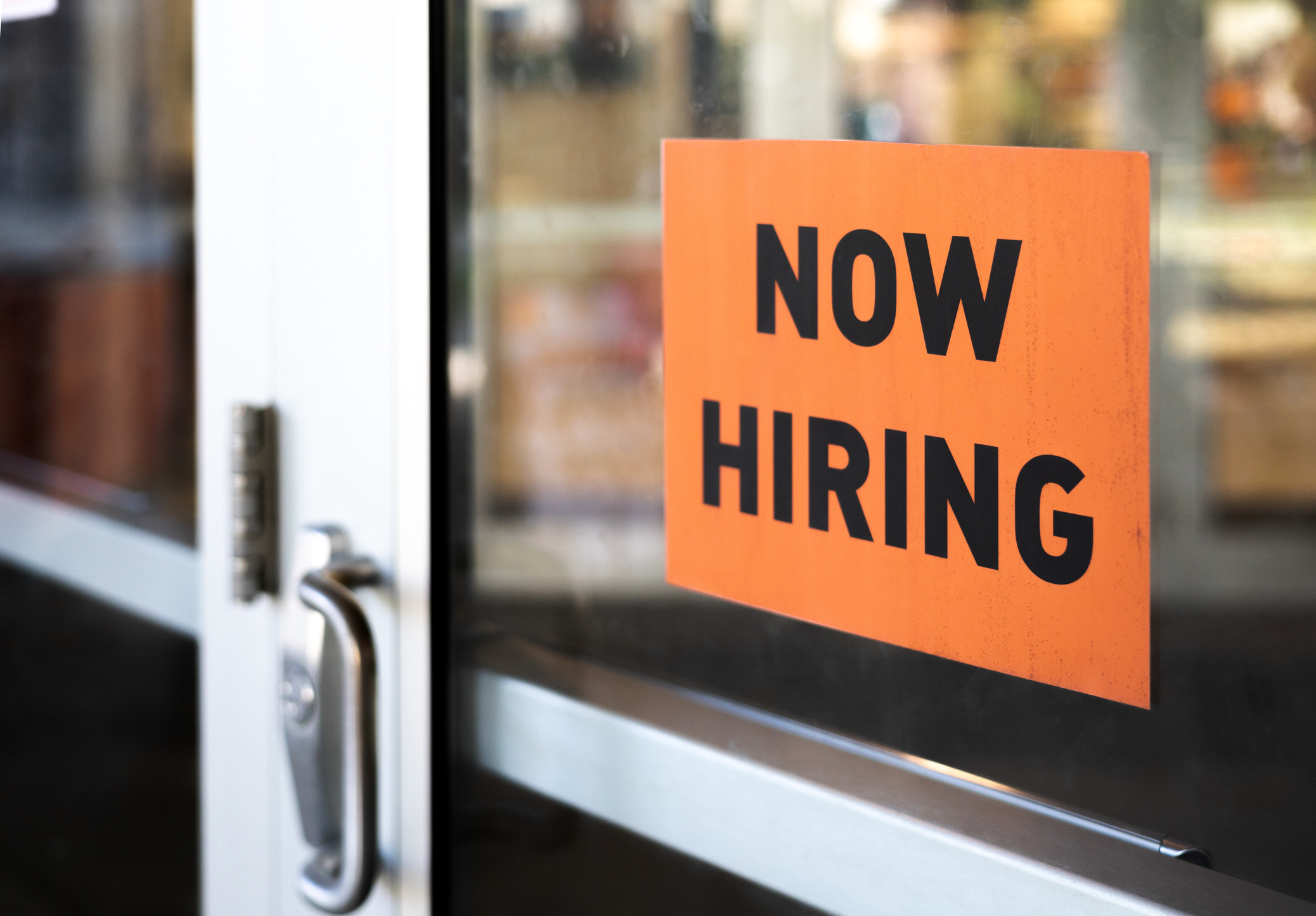May Job Openings Top Expectations: What to Know
Job openings in May were higher than economists expected, while April's number was revised lower. Here's what you need to know.


The Job Openings and Labor Turnover Survey (JOLTS) released this morning by the Bureau of Labor Statistics (BLS) topped expectations and kicked off a busy week of jobs data.
The mid-morning report showed the number of job openings ticked slightly higher in May, to 8.1 million from 7.9 million in April. The April number was revised lower by 140,000 from its initial release last month. The data also revealed that the job openings rate ticked higher to 4.9% in May from 4.8% in April.
The JOLTS number for May beat economists' expectations. According to Comerica, job openings were estimated to decline to 7.9 million.
From just $107.88 $24.99 for Kiplinger Personal Finance
Become a smarter, better informed investor. Subscribe from just $107.88 $24.99, plus get up to 4 Special Issues

Sign up for Kiplinger’s Free Newsletters
Profit and prosper with the best of expert advice on investing, taxes, retirement, personal finance and more - straight to your e-mail.
Profit and prosper with the best of expert advice - straight to your e-mail.
"Job openings were slightly higher than expected in May, though the upbeat message was partially offset by downward revisions to April's openings," said Bill Adams, chief economist at Comerica.
Adams notes that the JOLTS data gives context to Wall Street, allowing it to "understand why the job market is doing what it's doing. That context shows that the gradual slowdown in U.S. job growth over the last few years is due to a much bigger slowdown in labor market churn, meaning fewer people quitting jobs and being hired by other employers."
The economist adds that slowing wage growth – a measure of inflation – can be attributed to the slowdown in the job market, since "getting a new job is a big driver of wage growth."
Job openings data hits ahead of June jobs report
The next big economic report is the Employment Situation Summary – also known as the jobs report or nonfarm payrolls report – which will be released by the Bureau of Labor Statistics at 8:30 am Eastern this Friday.
"The jobs report gives us a comprehensive look at the labor market, which is ultimately what fuels consumer spending," writes Dan Burrows, senior investing writer at Kiplinger, in his feature "When Is the Next Jobs Report?". "Recall that consumer spending accounts for about two-thirds of all U.S. economic activity, and you can see why the jobs report has always been front and center."
More recently, jobs data and wage pressures have made the Federal Reserve anxious about cutting interest rates. "Cut too soon, with a healthy economy and labor market as the backdrop, and inflation could accelerate again, the thinking goes.," Burrows adds.
According to CME Group's FedWatch Tool, futures traders are currently pricing in a 63% chance the Fed will issue its first quarter-point rate cut in September, up from 47% one month ago.
Related Content
Profit and prosper with the best of Kiplinger's advice on investing, taxes, retirement, personal finance and much more. Delivered daily. Enter your email in the box and click Sign Me Up.

Joey Solitro is a freelance financial journalist at Kiplinger with more than a decade of experience. A longtime equity analyst, Joey has covered a range of industries for media outlets including The Motley Fool, Seeking Alpha, Market Realist, and TipRanks. Joey holds a bachelor's degree in business administration.
-
 Stocks Struggle Ahead of November Jobs Report: Stock Market Today
Stocks Struggle Ahead of November Jobs Report: Stock Market TodayOracle and Broadcom continued to fall, while market participants looked ahead to Tuesday's jobs report.
-
 7 Dr. Seuss Quotes Retirees Should Live By
7 Dr. Seuss Quotes Retirees Should Live ByYou're off to great places! Why Dr. Seuss is the retirement guru you didn't know you needed.
-
 Fed's Rate Cuts Could Have Impacts You Might Not Anticipate
Fed's Rate Cuts Could Have Impacts You Might Not AnticipateUnderstanding how lower interest rates could impact your wallet can help you determine the right financial moves to make.
-
 Stocks Struggle Ahead of November Jobs Report: Stock Market Today
Stocks Struggle Ahead of November Jobs Report: Stock Market TodayOracle and Broadcom continued to fall, while market participants looked ahead to Tuesday's jobs report.
-
 Past Performance Is Not Indicative of Your Financial Adviser's Expertise
Past Performance Is Not Indicative of Your Financial Adviser's ExpertiseMany people find a financial adviser by searching online or asking for referrals from friends or family. This can actually end up costing you big-time.
-
 I'm a Financial Planner: If You're Not Doing Roth Conversions, You Need to Read This
I'm a Financial Planner: If You're Not Doing Roth Conversions, You Need to Read ThisRoth conversions and other Roth strategies can be complex, but don't dismiss these tax planning tools outright. They could really work for you and your heirs.
-
 Could Traditional Retirement Expectations Be Killing Us? A Retirement Psychologist Makes the Case
Could Traditional Retirement Expectations Be Killing Us? A Retirement Psychologist Makes the CaseA retirement psychologist makes the case: A fulfilling retirement begins with a blueprint for living, rather than simply the accumulation of a large nest egg.
-
 I'm a Financial Adviser: This Is How You Can Adapt to Social Security Uncertainty
I'm a Financial Adviser: This Is How You Can Adapt to Social Security UncertaintyRather than letting the unknowns make you anxious, focus on building a flexible income strategy that can adapt to possible future Social Security changes.
-
 I'm a Financial Planner for Millionaires: Here's How to Give Your Kids Cash Gifts Without Triggering IRS Paperwork
I'm a Financial Planner for Millionaires: Here's How to Give Your Kids Cash Gifts Without Triggering IRS PaperworkMost people can gift large sums without paying tax or filing a return, especially by structuring gifts across two tax years or splitting gifts with a spouse.
-
 'Boomer Candy' Investments Might Seem Sweet, But They Can Have a Sour Aftertaste
'Boomer Candy' Investments Might Seem Sweet, But They Can Have a Sour AftertasteProducts such as index annuities, structured notes and buffered ETFs might seem appealing, but sometimes they can rob you of flexibility and trap your capital.
-
 AI Stocks Lead Nasdaq's 398-Point Nosedive: Stock Market Today
AI Stocks Lead Nasdaq's 398-Point Nosedive: Stock Market TodayThe major stock market indexes do not yet reflect the bullish tendencies of sector rotation and broadening participation.